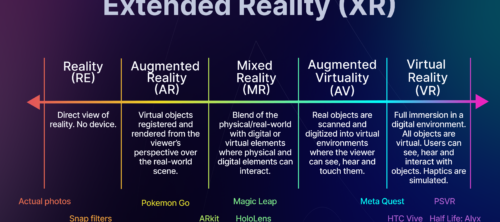
Reshaping Online Shopping in 2023 with Augmented Reality
Covid-19 alone has elevated the level of dependency consumers all over the world have on online shopping. Online shoppers are rising day by day and this is not a temporary consequence. AR technology can really be the next big thing in a future not too far from now. Numerous e-commerce markets may see substantial revenue boosts as the reluctance of online shoppers is reduced when they envision the items from the convenience of their homes more clearly with their handset. The main answer to ‘how is augmented reality changing online shopping?’ is that AR offers a smooth, convenient, and fast shopping solution for customers. That is because the internet shopping paradigm has grown at a massive pace in twenty years, competing head-to-head with physical stores.
Comparing AR to Current Online Shopping
Assessing whether a particular commodity is appropriate for them is probably the greatest challenge consumers face during online shopping. Here is where AR steps in to the rescue. AR will give shoppers trust that will inspire their buying choices in exchange. But why will AR rule over e-commerce sites in the upcoming years? Let us see why E-commerce will soon transform into A-commerce.
AR is Accessible To a Wider Audience
Augment reality can be experienced by anyone who has access to a phone or tablet. All they have to do is download an application, and they will be off to use AR in no time. In these modern times and more so in the future, the majority of the population owns or has access to tablets or smartphones. AR enables one to look deeper into digital shopping, producing stories of living, mutating, changeable shopping experience. Augmented reality technology resembles life in many ways. Sellers are also searching for ways to incorporate augmented reality technology into their shops in order to allow consumers to access the specific details available online while exploring the exact physical product using a smartphone at the same time.
Realistic Product Showcasing
Imagine furniture shopping: you need a particular rose-gold sofa set to match with your curtains, just as you envisioned, but how would you know it will fit in your room? This is where AR steps in. Using AR, one now can ensure their new furniture will fit in their space right next to the curtains. Augmented reality will help consumers connect with a brand. Most of the main problems of online retailers can be addressed by this. How great is that? Undoubtedly, e-commerce firms will quickly embrace augmented reality technology on a broader scale. Without visiting the actual store, people would be able to imagine and comprehend product features. This would raise user engagement to a great extent and result in a minimal rate of exchange or return. Even consumers who are not familiar with purchasing items will become satisfied online customers after checking these out.
Customer interaction is higher
AR enables authenticity and is therefore far more interactive than regular advertising material to convey a brand’s identity. The incredibly entertaining material invigorates consumers to engage repeatedly with the smartphone application. By using AR, individuals may adjust a product’s size and color or alter some other element with a simple touch. This has now made it much simpler to tailor items than in a traditional shop. Digital fitting rooms can help consumers pick the correct size and minimize returns on transactions. This virtual reality platform will also be used for advertising campaigns that incorporate AR to support materials.
3D Shopping experience
Whenever we are buying anything from an online platform, be it Amazon, eBay, or a mere Instagram page, we often worry about how it would look in real life. Augmented reality solves this issue by creating a 3D shopping experience, and that too online! This may be a revolutionary step for online retailing as a whole, though a bit too futuristic. However, the day is not far when built-in 3D looking products can be rendered by customers in their homes. Online businesses have to keep moving towards offering their clients many more interactive experiences at a certain stage of growth. ‘How is augmented reality changing online shopping?’ is an easy question to answer when it is understood that AR provides consumers ‘an almost real’ experience, being on the other side of the screen.
Creates more hype and money
The e-commerce industry is increasingly embracing the innovations of AR and VR. For a typical e-commerce company, the cost of creating augmented or virtual reality experiences is very high. However, costs are falling due to adaptability and greater advancement. Sales and the long-term success of any e-commerce company will be powered by a living and unforgettable experience. Despite the higher initial cost, firms have considered AR to be profitable. Augmented technology has become viral on the internet. Not only does it create a ‘personal’ exposure with the client, but also generates a buzz in the atmosphere, getting everyone into the conversation. Talking about the hype, the retention of new users is enhanced by word-of-mouth media. AR imprints the buying experience and thereby serves as a motivator for their buyers to ‘advertise’ to their friends and recommend how they can ‘test’ a product on the internet.
Conclusion
By encouraging online shoppers to try out items that used to just be pictures on a screen in the e-commerce context, AR will add originality to the shoppers’ circumstances. For advertisement, creating brands, product marketing, and user acquisition, augmented reality is on the rise. Prospects are nearly endless in this field. Research on the AR and VR market is underway, concentrating on how organizations should transform these prospects into reality. Consequently, this is supposed to reshape E-commerce into A-Commerce, in which each customer can strive for a more convenient buying experience with AR technology. E-commerce firms have to spend early and stay dedicated in order to acquire the maximum profits from it. The world of online shopping is being extended, but it is the consumers who have to make it happen.





